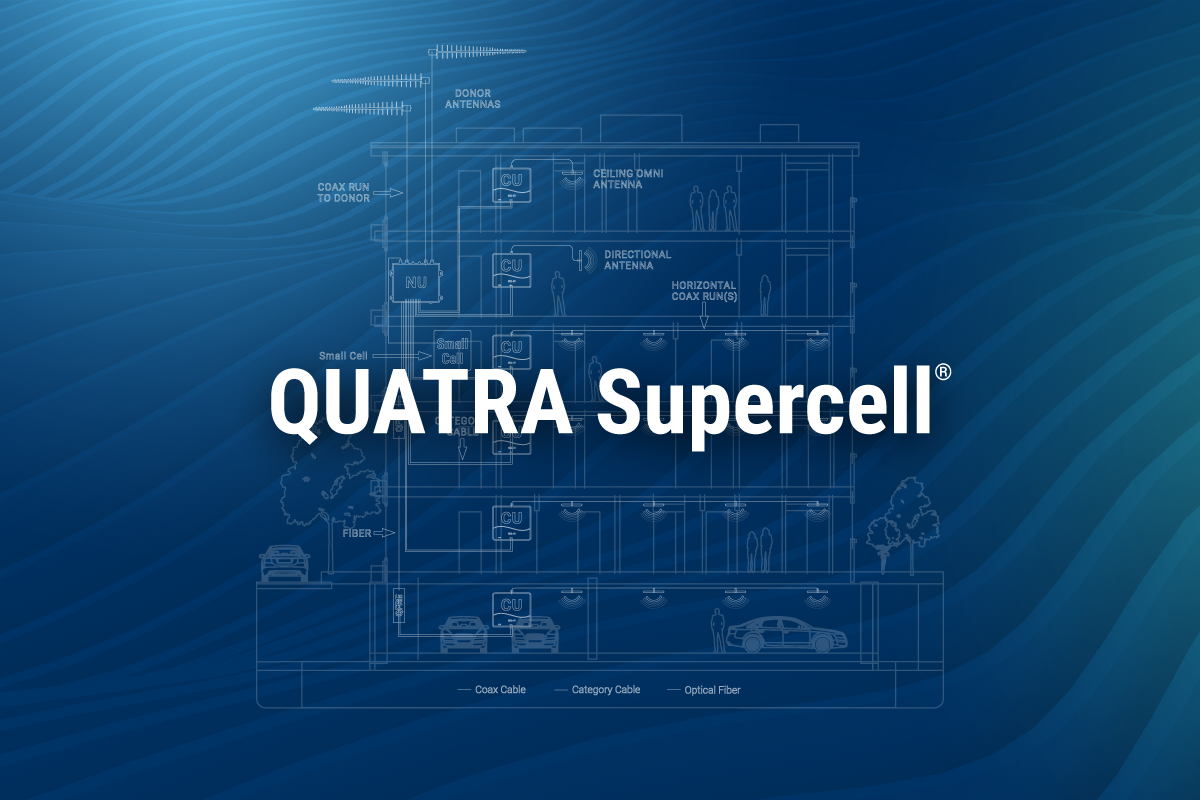Seniors are more digitally connected than ever. Research finds that 80% of older adults have a cellphone of some kind. They often use cellphones for making doctors’ appointments, setting reminders, and even paying bills. But very importantly, cellphones keep older adults in touch with family, friends, and the outside world, especially during these unprecedented times.
As the number of older adults who choose to age in communities that can support their adjusting needs increases, ensuring reliable in-building cellular coverage cannot be an afterthought for facility owners who want to serve and retain tenants from this growing demographic. Even upgrading an existing system can provide a big payback as one retirement village in North Carolina realized.
Nestled on 150 beautiful acres in the heart of North Carolina, the 55+ community offers all the comforts of active retirement living, including a regulation 9-hole golf course and walking trails on its campus. Residents and their visiting family members expected good cellular coverage in the independent-living facility, which features two- and three-bedroom apartments. However, VAST Signal Booster Solutions, a NC-based integrator with expertise in consulting, designing, and installing signal booster solutions, discovered that the older analog booster system that was installed throughout the entire community was not performing as required.
“When the older system was installed, just about everything was 3G technology. The system worked well at the time because people weren’t really using their phones for data, they were using them mostly for making phone calls,” explains Steve Klingensmith, President of VAST Signal Booster Solutions.
“As people’s needs changed, and carriers moved to voice over LTE technology, the older system just wasn’t strong enough to penetrate into all of the apartments the way it needed to for phones to be usable,” he adds.
VAST conducted an extensive in-building walk test through the apartment building to determine where signal needed to be boosted, and how much equipment was needed. “The best way to determine your cell phone signal strength is to check your RAW signal strength. That’s why the walk test is extremely important as a first step,” advises Klingensmith.
VAST designed a solution featuring CEL-FI QUATRA, an all digital and intelligent distributed antenna system (DAS) hybrid that addresses the challenges of poor voice quality, dropped calls, and dead zones in large commercial buildings. Unlike older analog boosters, the QUATRA system delivers a cellular signal that is up to 1000x stronger, offering a much larger coverage footprint. QUATRA also uses ethernet cabling so can deliver Power over Ethernet, which eliminates the need to install additional power outlets for the internal antennas that distribute signal to users throughout the building.
The independent-living facility has 56 apartments, with each floor being 25,000 square feet. VAST placed two antennas on the roof, one antenna for T-Mobile and Sprint, the other for Verizon and AT&T. The outdoor carrier signals are transmitted to the CEL-FI QUATRA Network Unit (NU) that was placed on the fourth floor of the building, where the signals are enhanced and digitally re-transmitted over ethernet cables to internal antennas strategically placed in the hallways.
“By installing the CEL-FI QUATRA system, we were able to get much greater signal gain than you got with the older system,” says Klingensmith. “Plus, now that it’s an all-digital system, data is transmitting at a much higher rate and it’s propagating further into the individual apartments so residents get better reception in their homes and can use their cell phones for text and video.”
Residents and their visiting family members can now also get a reliable cellular signal no matter where they are in the building. The cellular signal can even penetrate into the elevator, because of where the antennas were placed, according to Klingensmith.
“There are antennas outside of the elevators, so when someone’s in the elevator, they can still maintain their call if they’re going between floors,” he explains. “Also the building has dropped ceilings, so the antennas just blend in with whatever they have in the ceilings, whether it’s Wi-Fi access points, fire alarms, or smoke detectors.”
It took the three-person team from VAST four days to complete the installation, including running the cable. The team followed health and safety protocols and wore masks and physically distanced during the installation.
“The owners particularly appreciated that we were able to provide such improved cellular reception throughout the building at a fraction of the cost of other systems proposed for apartment buildings,” says Klingensmith.
What to look for in an in-building cellular connectivity solution
When evaluating solutions to improve cellular connections in multi-dwelling buildings, Klingensmith recommends considering the following to ensure you and your tenants get the most out of your investment:
- Solution Choice: Is the system more complex (and costly) than you need, or at the other end, not robust enough to provide the quality of service required by your occupants?
- Solution References: What is the actual coverage footprint of the system (not just the specifications)? Are there references from owners/managers of similar size and type of buildings?
- Solution Timeline: How long will it take to install the system?
- Solution Planning: Can you show me a map of where coverage is weak in the building and how the system will provide the reception needed?
- Carrier-Grade Approved: Is the proposed system carrier approved for 3G/4G/LTE voice and data?
Seniors need good in-building cellular coverage and have come to expect it. Don’t let poor cellular coverage in your buildings cost you valuable tenants, especially during such uncertain times. CEL-FI products provide the most advanced technology for improving cellular coverage in your buildings.
Learn more about CEL-FI QUATRA at: https://nextivityinc.com/quatra/whitepaper/
A version of this article was originally published by AAOA (American Apartment Owners Association)




